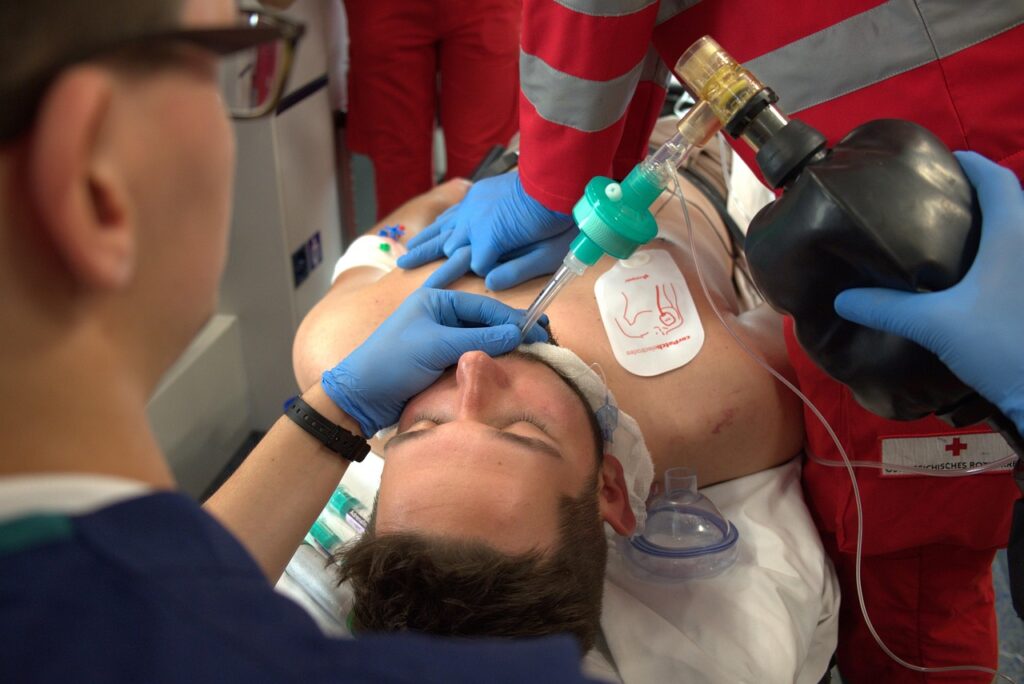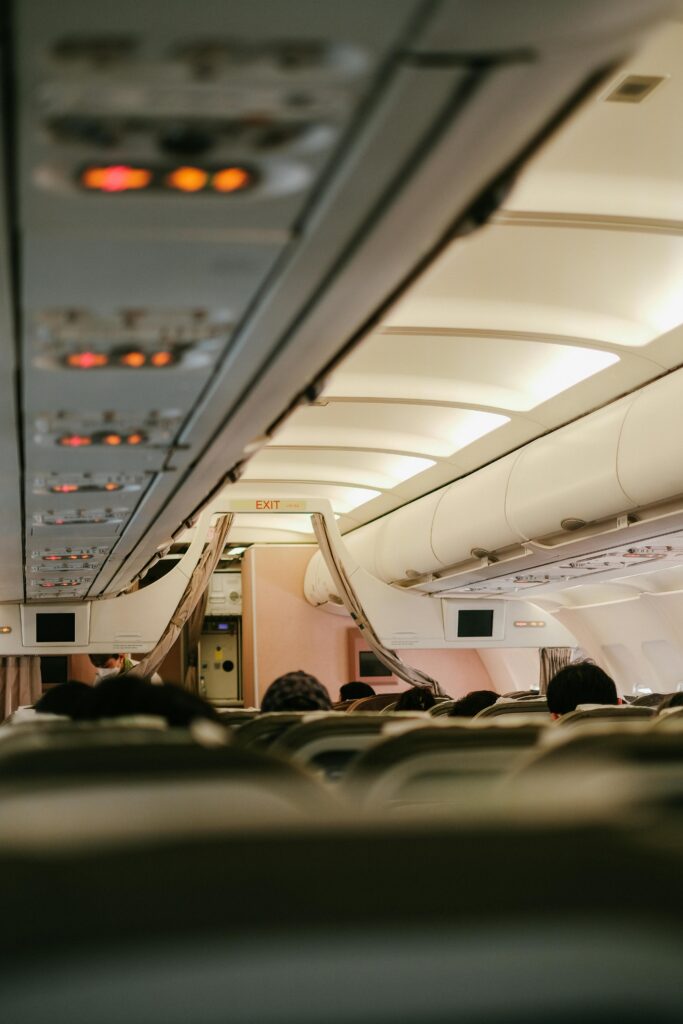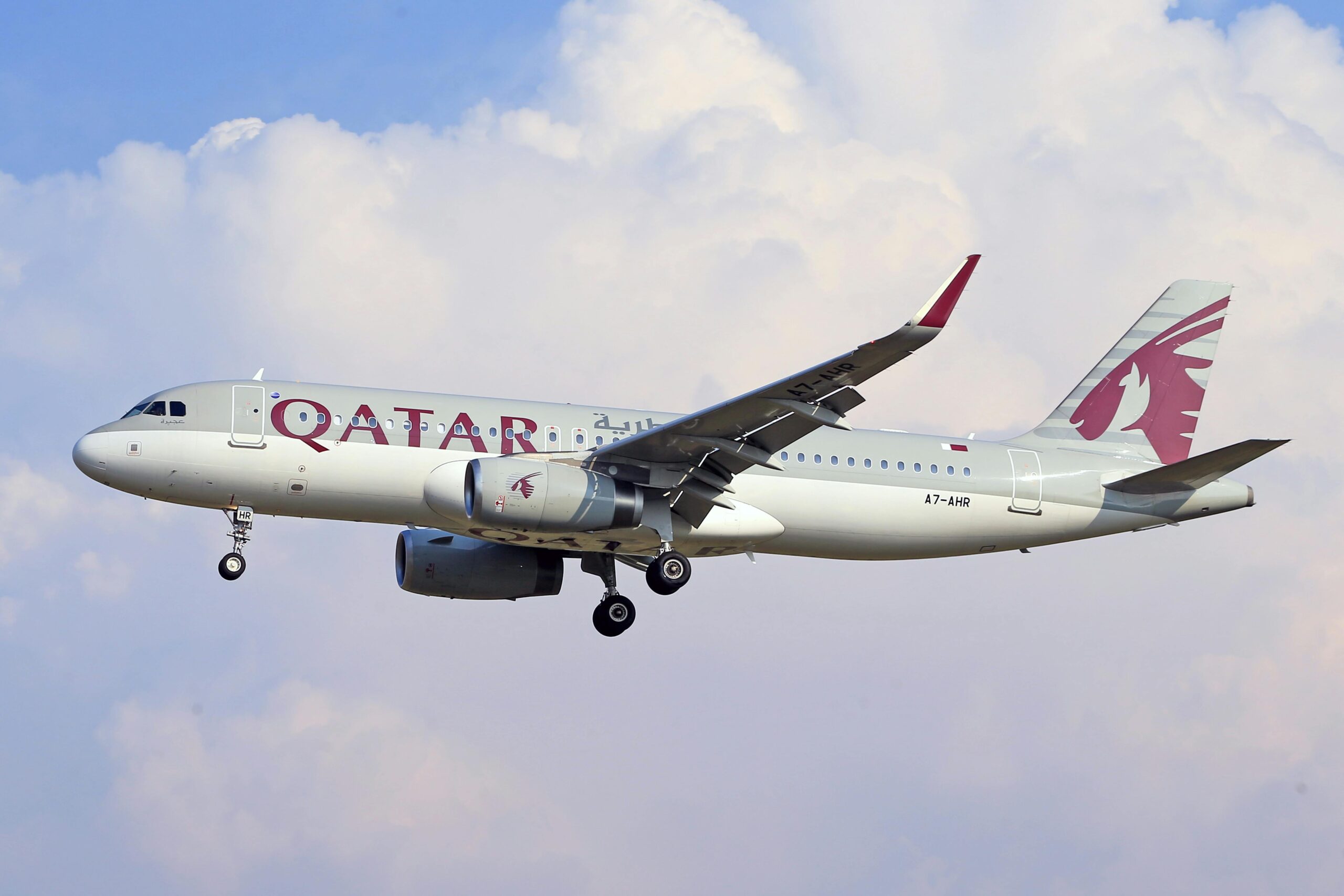Imagine boarding a long-haul flight, expecting a routine journey, only to find yourself seated next to a deceased passenger for hours. This unsettling scenario became a reality for an Australian couple traveling on a Qatar Airways flight from Melbourne to Doha, bringing global attention to the rarely discussed issue of in-flight deaths and how airlines handle such situations.

The Qatar Airways Incident: A Nightmare at 35,000 Feet
Mitchell Ring and his partner, Jennifer Colin, were onboard their Qatar Airways flight when a fellow passenger suddenly collapsed mid-flight. Despite the cabin crew’s immediate efforts to revive her, the passenger tragically passed away. Due to logistical challenges in moving the body, the deceased was placed in Ring’s seat, forcing him to sit beside the corpse for nearly four hours.
Jennifer Colin, already an anxious flyer, was deeply shaken by the incident and sought comfort from another passenger. Upon landing in Doha, medical personnel boarded the aircraft to remove the body, but passengers were instructed to remain seated, intensifying the couple’s distress.
Qatar Airways later issued an apology and stated they were reaching out to affected passengers. However, Ring and Colin criticized the airline for not providing immediate emotional support. This incident raises an important question: What actually happens when a passenger dies on a flight?
How Airlines Handle In-Flight Deaths
While rare, in-flight deaths do happen, and airlines follow strict protocols to manage such situations with dignity and minimal disruption. Here’s what typically happens:
- Immediate Medical Response
- Flight attendants are trained in first aid and basic life support. If a passenger collapses, they assess the situation, administer CPR if needed, and consult with medical professionals on the ground via radio.
- Confirmation of Death
- If the passenger cannot be revived, the crew will consult with any medical professionals onboard (if available). In the absence of a doctor, airline protocols allow the crew to make a reasonable judgment about the passenger’s condition.
- Positioning the Deceased
- Ideally, the body is moved to an empty row or a designated space in business class, covered with a blanket as a sign of respect. However, if the flight is full, the deceased may have to remain in their seat.
- Informing Authorities
- The pilot notifies the destination airport so that medical personnel can be on standby upon arrival. Some cases may require emergency landings, depending on the circumstances.
- Disembarkation & Handling
- After landing, authorities typically allow all passengers to leave the plane before the body is removed. The airline then coordinates with the appropriate embassy or local authorities to assist the deceased’s family.

How Common Are In-Flight Deaths?
In-flight deaths are relatively rare but not unheard of. A 2021 study published in The American Journal of Emergency Medicine found that:
- Approximately 18.2 medical emergencies occur per one million passengers annually.
- The mortality rate for in-flight medical incidents is 0.21 per million passengers per year.
While these numbers are low, they highlight that in-flight medical emergencies do occur, and airlines must be prepared to handle them sensitively and efficiently.
Emotional Impact on Passengers and Crew
Experiencing a death onboard can be deeply traumatic, not just for the deceased’s family but also for fellow passengers and the cabin crew.
- In the Qatar Airways incident, Ring and Colin felt unsupported and emotionally distressed.
- Airlines are expected to offer post-incident psychological support, but this varies between companies.
- Flight attendants, despite their training, also face emotional tolls from handling such situations.
Passengers who witness such events often experience anxiety, discomfort, and even post-traumatic stress symptoms, making airline policies on emotional support crucial.
Passenger Rights: What Can You Expect?
If you ever experience a similar situation, knowing your rights can help:
✔️ Right to Information: You can ask the airline for details on what happened and how the situation is being managed.
✔️ Right to Emotional Support: Some airlines offer counseling services after traumatic in-flight experiences—though availability varies.
✔️ Right to Flight Adjustments: In extreme cases, affected passengers can request seat reassignments or alternative travel arrangements.
✔️ Right to File a Complaint: If an airline mishandles an in-flight death, you can file a formal complaint or seek legal advice.

Common Questions About In-Flight Deaths
🔹 How often do passengers die on airplanes?
- Rarely. The mortality rate is 0.21 per million passengers annually—though flights carrying elderly or critically ill travelers may see slightly higher numbers.
🔹 Do airlines divert flights when someone dies onboard?
- It depends. If the passenger was traveling alone, or the situation is particularly distressing, pilots may opt for an emergency landing. Otherwise, the flight usually continues as planned.
🔹 Are flight attendants trained to handle in-flight deaths?
- Yes. Crew members receive first aid and emergency response training, including how to handle a passenger’s death with respect and minimal disruption.
🔹 Can a deceased passenger be stored in the cargo hold?
- No. Aviation laws prohibit moving a body to the cargo area mid-flight due to logistical and legal concerns.
🔹 What should I do if I witness a death on a flight?
- Stay calm, avoid panicking, and allow the crew to handle the situation. Offer assistance only if requested.
Final Thoughts: A Rare but Real Possibility
While most flights are uneventful, incidents like the Qatar Airways case highlight the importance of airline protocols in handling in-flight deaths. Passengers and crew alike can find such situations distressing, making it crucial for airlines to improve emotional support and communication during such incidents.
Sources The New York Times


